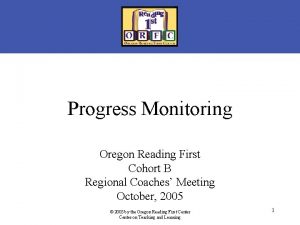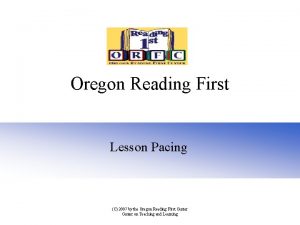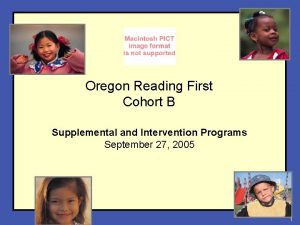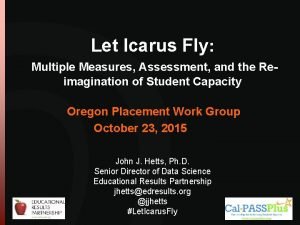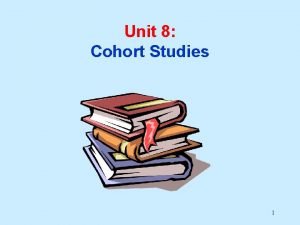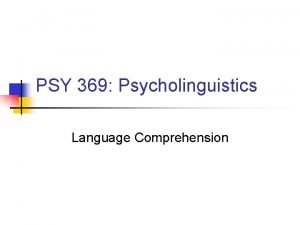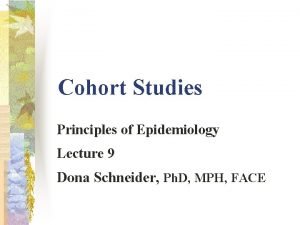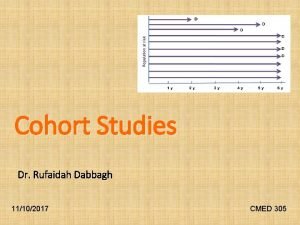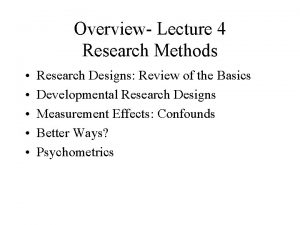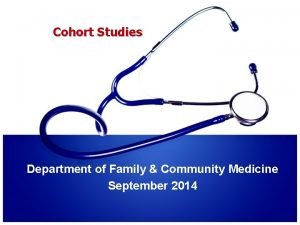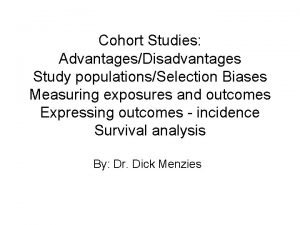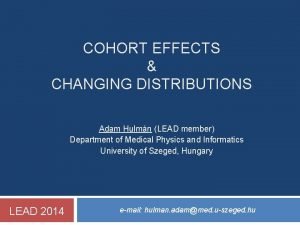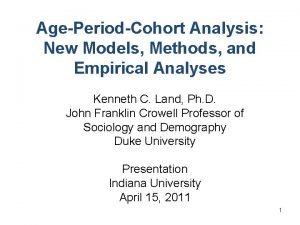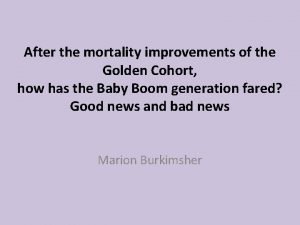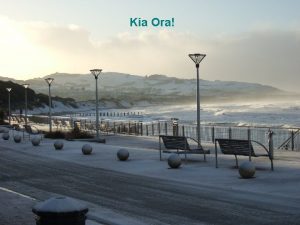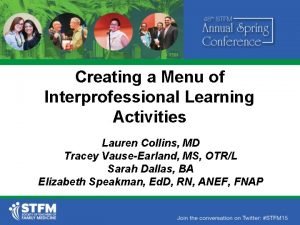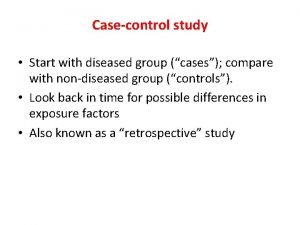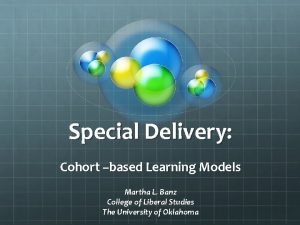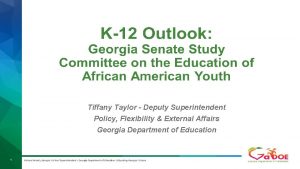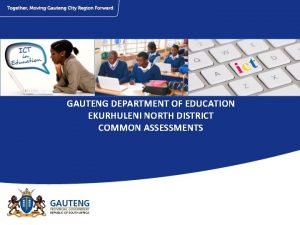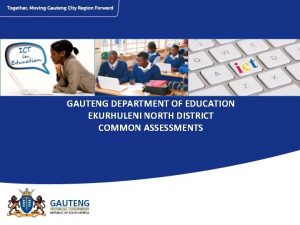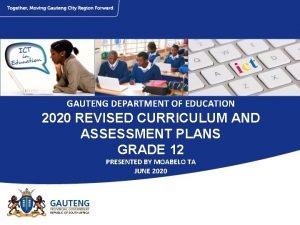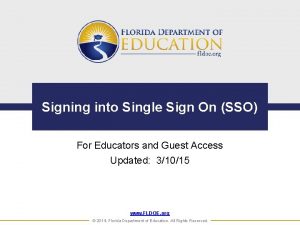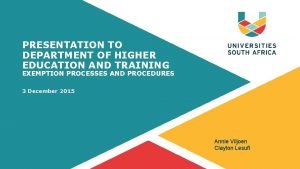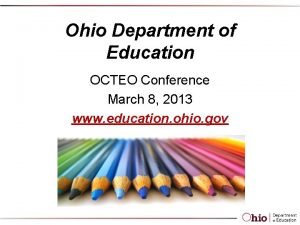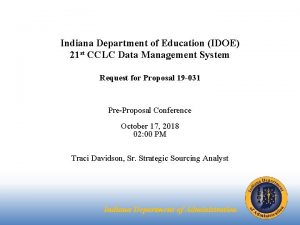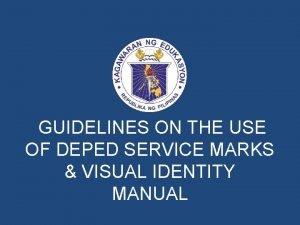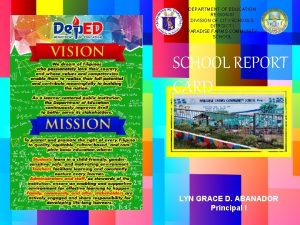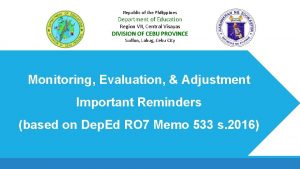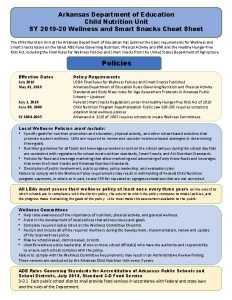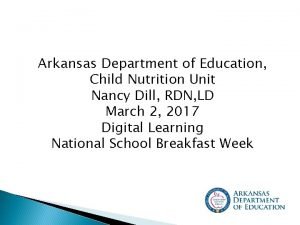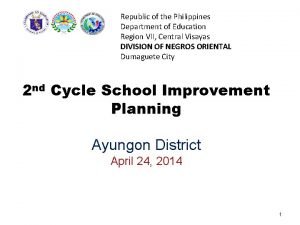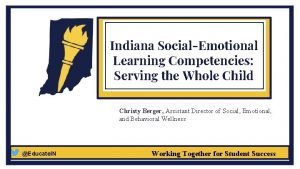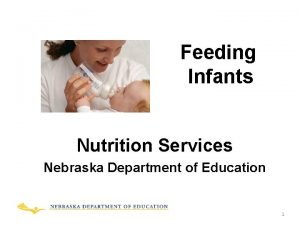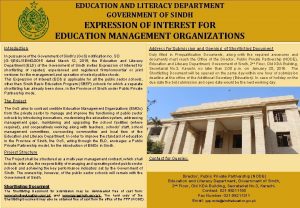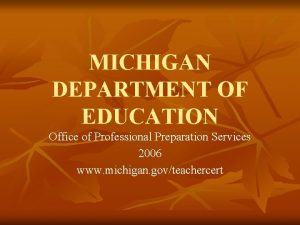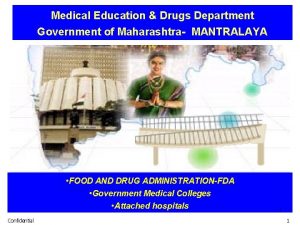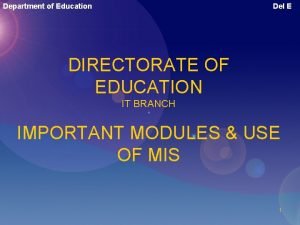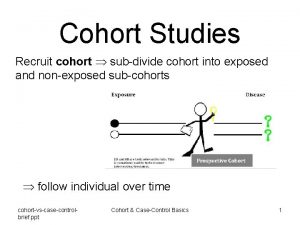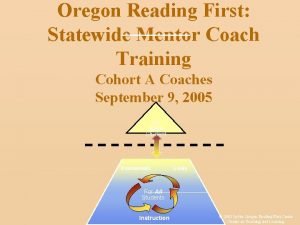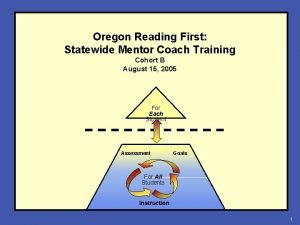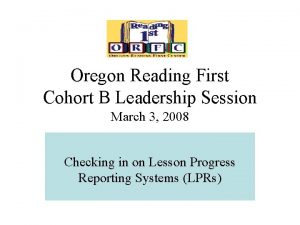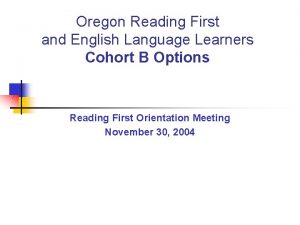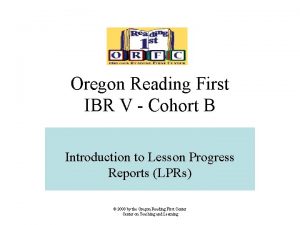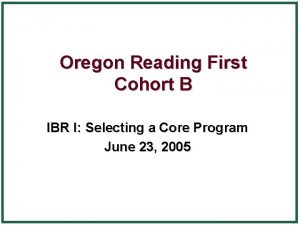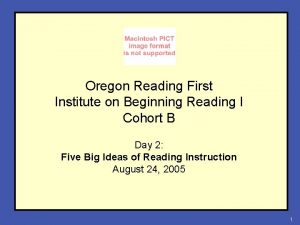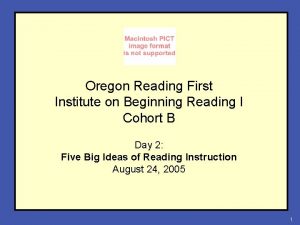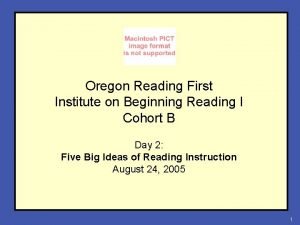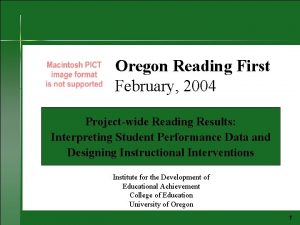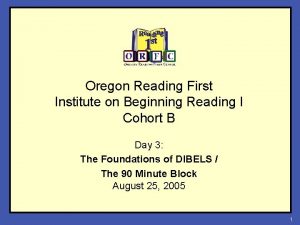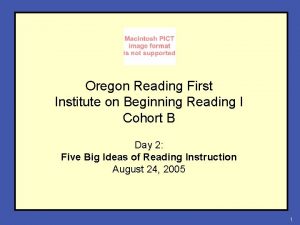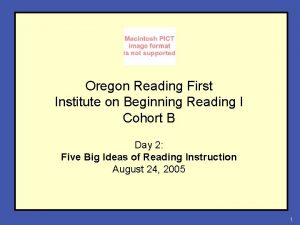Oregon Department of Education Oregon Reading First Cohort


































































- Slides: 66

Oregon Department of Education & Oregon Reading First Cohort A District Team Leader Sustainability Meeting April 8, 2008 (C) 2008 by the Oregon Reading First Center on Teaching and Learning

Agenda April 8, 2008 Time 9: 00 -10: 00 Topic Welcome Guest Speaker: Pat Burk, Chief Policy Officer for ODE Reading First Success Stories: 5 Years Worth of Data Presenters Joni Gilles Hank Fien 10: 00 -10: 15 Break 10: 15 -11: 00 Update on Sustainability and Survey Stan Paine Sustainability Documents / 2008 -2009 Funding / Cohort A Sustainability Study Joni Gilles Cohort A Supports for 2008 -2009 and Future Projects Trish Travers Oregon K-12 Literacy Framework Update Carrie Thomas-Beck Hillsboro District Literacy Plan / School Literacy Plan Update / HAWD? Report Hillsboro DTLs / Pat Nash 11: 00 -12: 00 -12: 40 Networking Lunch 12: 40 -1: 00 Beacon Schools Carrie Thomas-Beck

Reading First Success Stories 5 Years Worth of Data

Cohort A Projectwide Data: Reviewing Outcomes (Winter 2004 -Winter 2008) Percent at Established / Low Risk Winter 2004 (Year 1) Winter 2005 (Year 2) Winter 2006 (Year 3) Kindergarten - PSF 44% 49% (+5) 62% (+18) 69% (+25) 74% (+30) Kindergarten - NWF 38% 42% (+4) 53% (+15) 60% (+22) 66% (+28) First Grade - NWF 32% 43% (+11) 51% (+19) 59% (+27) 65% (+33) First Grade - ORF 32% 39% (+7) 44% (+12) 48% (+16) 51% (+19) Second Grade - ORF 39% 44% (+5) 52% (+13) 54% (+15) 57% (+18) Third Grade - ORF 34% 38% (+4) 42% (+8) 47% (+13) 49% (+15) Grade/Measure Winter 2007 Winter 2008 (Year 4) (Year 5) Note: Number in parentheses indicate the % increase or decrease as compared to Year 1 outcomes

Cohort A Projectwide Data: Reviewing Outcomes (Winter 2004 -Winter 2008) Percent at Deficit/ At Risk Winter 2004 (Year 1) Winter 2005 (Year 2) Winter 2006 (Year 3) Kindergarten - PSF 30% 25% (-5) 16% (-14) 14% (-16) 11% (-19) Kindergarten - NWF 38% 34% (-4) 23% (-15) 17% (-21) 14% (-24) First Grade - NWF 27% 23% (-4) 14% (-13) 12% (-15) 10% (-17) First Grade - ORF 33% 27% (-6) 23% (-10) 19% (-14) 16% (-17) Second Grade - ORF 48% 42% (-6) 33% (-15) 32% (-16) 31% (-17) Third Grade - ORF 42% 40% (-2) 33% (-9) 29% (-13) 27% (-15) Grade/Measure Winter 2007 Winter 2008 (Year 4) (Year 5) Note: Number in parentheses indicate the % increase or decrease as compared to Year 1 outcomes

Cohort A Years 3 -5 vs. Cohort B Years 1 -3 Percent at Established / Low Risk Winter 2006 Winter 2007 Winter 2008 Cohort A (Year 3) Cohort B (Year 1) Cohort A (Year 4) Cohort B (Year 2) Cohort A (Year 5) Cohort B (Year 3) Kindergarten-PSF 62% 47% 69% 50% 74% 70% Kindergarten-NWF 53% 38% 60% 45% 66% 60% First Grade-NWF 51% 34% 59% 48% 65% 52% First Grade-ORF 44% 31% 48% 40% 51% 41% Second Grade-ORF 52% 42% 54% 49% 57% 53% Third Grade-ORF 42% 30% 47% 34% 49% 47% Grade/Measure

Cohort A Years 3 -5 vs. Cohort B Years 1 -3 Percent at Deficit / At Risk Winter 2006 Grade/Measure Cohort A (Year 3) Winter 2007 Cohort B Cohort A (Year 1) (Year 4) Cohort B (Year 2) Winter 2008 Cohort A Cohort B (Year 5) (Year 3) Kindergarten-PSF 16% 27% 14% 24% 11% Kindergarten-NWF 23% 39% 17% 30% 14% 16% First Grade-NWF 14% 27% 12% 18% 10% 15% First Grade-ORF 23% 34% 19% 24% 16% 23% Second Grade-ORF 33% 45% 32% 36% 31% 30% Third Grade-ORF 33% 45% 29% 40% 27% 28%

NOTES: The dotted lines represent the 75 th and 25 th percentiles for the percent of students making AP based on all Oregon schools collecting DIBELS in 2004 -05. Intact refers to students who have data in both fall and winter. Challenge contexts are based on the percent of kindergarteners identified as intensive in the fall. The least challenging context includes schools with fewer than 33% of kindergarteners identified as intensive, the moderate context includes schools with between 34 and 46% of kindergarteners identified as intensive, and the most challenging context includes schools with more than 46% of kindergarteners identified as intensive.

NOTES: The dotted lines represent the 75 th and 25 th percentiles for the percent of students making AP based on all Oregon schools collecting DIBELS in 2004 -05. Intact refers to students who have data in both fall and winter. Challenge contexts are based on the percent of kindergarteners identified as intensive in the fall. The least challenging context includes schools with fewer than 33% of kindergarteners identified as intensive, the moderate context includes schools with between 34 and 46% of kindergarteners identified as intensive, and the most challenging context includes schools with more than 46% of kindergarteners identified as intensive.

NOTES: The dotted lines represent the 75 th and 25 th percentiles for the percent of students making AP based on all Oregon schools collecting DIBELS in 2004 -05. Intact refers to students who have data in both fall and winter. Challenge contexts are based on the percent of kindergarteners identified as intensive in the fall. The least challenging context includes schools with fewer than 33% of kindergarteners identified as intensive, the moderate context includes schools with between 34 and 46% of kindergarteners identified as intensive, and the most challenging context includes schools with more than 46% of kindergarteners identified as intensive.

NOTES: The dotted lines represent the 75 th and 25 th percentiles for the percent of students making AP based on all Oregon schools collecting DIBELS in 2004 -05. Intact refers to students who have data in both fall and winter. Challenge contexts are based on the percent of kindergarteners identified as intensive in the fall. The least challenging context includes schools with fewer than 33% of kindergarteners identified as intensive, the moderate context includes schools with between 34 and 46% of kindergarteners identified as intensive, and the most challenging context includes schools with more than 46% of kindergarteners identified as intensive.

NOTES: The dotted lines represent the 75 th and 25 th percentiles for the percent of students making AP based on all Oregon schools collecting DIBELS in 2004 -05. Intact refers to students who have data in both fall and winter. Challenge contexts are based on the percent of kindergarteners identified as intensive in the fall. The least challenging context includes schools with fewer than 33% of kindergarteners identified as intensive, the moderate context includes schools with between 34 and 46% of kindergarteners identified as intensive, and the most challenging context includes schools with more than 46% of kindergarteners identified as intensive.

NOTES: The dotted lines represent the 75 th and 25 th percentiles for the percent of students making AP based on all Oregon schools collecting DIBELS in 2004 -05. Intact refers to students who have data in both fall and winter. Challenge contexts are based on the percent of kindergarteners identified as intensive in the fall. The least challenging context includes schools with fewer than 33% of kindergarteners identified as intensive, the moderate context includes schools with between 34 and 46% of kindergarteners identified as intensive, and the most challenging context includes schools with more than 46% of kindergarteners identified as intensive.

School Success Stories Greatest Increase of Students at Low Risk Kindergarten - NWF Woodlawn Elementary Spring 2004 Spring 2007 Percent Change Percent of Students at Low Risk 30% 97% + 67% Percent of Students at Some Risk 36% 3% -33% Percent of Students At Risk 33% 0% -33%

School Success Stories Schools with a 40% or greater increase in the percent of students at Low Risk from Spring 2004 to Spring 2007 Kindergarten - NWF 50% or greater increase! 40% or greater increase! School Percent Change Mooberry +57% David Hill +49% West Powellhurst +54% Scott +45% Lent +50% Lot Whitcomb +44% Cherry Park +43% Sunrise +43% Alameda +42% Lincoln +40% May Roberts +40%

School Success Stories Schools with 80% or more of their students at Low Risk in Spring 2004 Kindergarten - NWF School Percent of Students at Low Risk Oak Grove 84% Boise-Eliot 82% Howard 81%

School Success Stories Greatest Decrease of Students at At Risk Kindergarten - NWF W. L. Henry Elementary Spring 2004 Spring 2007 Percent Change Percent of Students at Low Risk 27% 84% +57% Percent of Students at Some Risk 22% 11% -11% Percent of Students At Risk 51% 5% -46%

School Success Stories Schools with a 30% or greater decrease in the percent of students at risk from Spring 2004 to Spring 2007 Kindergarten - NWF 30% or greater decrease! School Percent Change West Powellhurst -38% Cherry Park -32% Lot Whitcomb -35% Lent -32% Sunrise -33% May Roberts -32% Woodlawn -33% Lincoln Park -31% Alameda -32% David Hill -30%

School Success Stories Schools with 10% or less of their students At Risk in Spring 2004 Kindergarten - NWF School Percent of Students At Risk Howard 2% Jackson 4% Jefferson 4% Oak Grove 6% Boise Eliot 7% Humboldt 7% Whitman 9% Myrtle Creek 9%

School Success Stories Greatest Increase of Students at Low Risk AND Greatest Decrease of Students at Risk First Grade - ORF David Hill Elementary Spring 2004 Spring 2007 Percent Change Percent of Students at Low Risk 30% 86% +56% Percent of Students at Some Risk 26% 10% -16% Percent of Students At Risk 44% 4% -40%

School Success Stories Schools with a 30% or greater increase in the percent of students at Low Risk from Spring 2004 to Spring 2007 First Grade - ORF School Percent Change Washington +40% Jefferson +38% Grove/Freewater +37% Cherry Park +33% Jackson +32% Lincoln Park +32% Ventura Park +30%

School Success Stories Schools with a 30% or greater decrease in the percent of students At Risk from Spring 2004 to Spring 2007 First Grade - ORF School Percent Change Washington -34% Humboldt -32% Tri City -30%

School Success Stories Greatest Increase of Students at Low Risk Second Grade - ORF Humboldt Elementary Spring 2004 Spring 2007 Percent Change Percent of Students at Low Risk 31% 76% +45% Percent of Students at Some Risk 24% 17% -7% Percent of Students At Risk 45% 7% -38%

School Success Stories Schools with a 30% or greater increase in the percent of students at Low Risk from Spring 2004 to Spring 2007 Second Grade - ORF School Percent Change Grove/Freewater +36% David Hill +33% Lincoln Park +33% Whitman +32% Ventura Park +30%

School Success Stories Greatest Decrease of Students At Risk Second Grade - ORF Humboldt Elementary & Woodlawn Elementary Humboldt Elementary Spring 2004 Spring 2007 Percent Change Percent of Students at Low Risk 31% 76% +45% Percent of Students at Some Risk 24% 17% -7% Percent of Students At Risk 45% 7% -38% Spring 2004 Spring 2007 Percent Change Percent of Students at Low Risk 18% 46% +28% Percent of Students at Some Risk 14% 25% +11% Percent of Students At Risk 68% 30% -38% Woodlawn Elementary

School Success Stories Schools with a 30% or greater decrease in the percent of students At Risk from Spring 2004 to Spring 2007 Second Grade - ORF School Percent Change Jefferson -35% Lincoln Park -31% Sunrise -31%

School Success Stories Greatest Increase of Students at Low Risk Third Grade - ORF Scott Elementary Spring 2004 Spring 2007 Percent Change Percent of Students at Low Risk 26% 74% +48% Percent of Students at Some Risk 45% 13% -32% Percent of Students At Risk 29% 13% -16%

School Success Stories Schools with a 30% or greater increase in the percent of students at Low Risk from Spring 2004 to Spring 2007 Third Grade - ORF School Percent Change Lincoln Park +43% Lent +41% Cherry Park +39% Whitman +34% Humboldt +32%

School Success Stories Greatest Decrease of Students At Risk Third Grade - ORF May Roberts Elementary Spring 2004 Spring 2007 Percent Change Percent of Students at Low Risk 19% 44% +25% Percent of Students at Some Risk 17% 33% +16% Percent of Students At Risk 64% 23% -41%

School Success Stories Schools with a 30% or greater decrease in the percent of students At Risk from Spring 2004 to Spring 2007 Third Grade - ORF School Percent Change Lent -34% Humboldt -32%

Summary • At the Project-level, we are: – Increasing the percentage of students reaching proficiency on important formative and summative goals – Decreasing the percentage of students significantly below proficiency levels • At the district-level: – We have a solid foundation and a replicable model to support positive achievement for children. • At the School-level, we have: – Many shining examples across and within each of our districts.

Summary • Most importantly, at the student level: – Each year more students are reaching the highest levels of proficiency’ – Each year dramatically less students are at the highest levels of risk that would typically forecast chronically negative outcomes. However, we still have work to do!

Effect Sizes for Large Scale Longitudinal Interventions (Borman et al. , 2003)

Update on Sustainability • • Update on Sustainability and Survey Sustainability Documents 2008 -2009 Funding Cohort A Sustainability Project

Cohort A Supports for 20082009 and Future Projects • Statewide Outreach Sessions • Cohort B Web. Ex Training Sessions • DIBELS Project-level Data and Redesign Updates • Zones of Growth Updates • Invitation to Participate in Monthly Brown Bag Sessions • Access to Web-Based LPR System • Monthly Newsletters • Oregon Reading First Center Website

Oregon K-12 Literacy Framework Update

Progress Report on the Oregon K-12 Literacy Framework Cohort A Sustainability Meeting April 8, 2008

A 3 X 6 Matrix Implementation of the Oregon Literacy Framework District Support for Implementation of the Oregon Literacy Framework State-Level Initiatives to Support Districts/Schools in Implementation of the Oregon Literacy Framework

At the School Level (K-3) • • Preamble Chapters 1 -6 IN DRAFT FORM Provide conceptual understanding and practical examples • Literature referenced in footnotes • Resources and tools referenced in text and in footnotes

At the District Level Expectations for District Literacy Leaders In Sustaining the Oregon Literacy Framework - DRAFT Elements of OLF 1. Goals, Objectives, Priorities Strategies and Actions • Establish clear, quantifiable district-level reading goals across K-3 that at minimum are linked to the five essential elements of early reading achievement and state standards. • Focus reading improvement efforts on scientifically-based practices that have demonstrated effectiveness. • Ensure that district policies, procedures, and actions are aligned with and support reading goals. • Review school level action plans to determine alignment with district goals. Modify school plans as necessary. • Utilize data on how well students are doing in relation to district reading goals to improve districtwide reading efforts. After each major data collection period, determine necessary actions and document in district action plan. • Provide positive attention, recognition, and support for schools throughout the district that are making progress in meeting district goals. Showcase those schools as model demonstration sites.

Revisions to K-3 • A new preface drafted • Addition of a Rt. I section to the assessment chapter • Commitment chapter streamlined with new main ideas identified • Addition of a parent/community involvement section to the commitment chapter • Incorporation of Tim Shanahan’s feedback

Addition of 4 -12 • Met twice with a work group of 4 -12 experts from across the state • Outlined the major content in 4 -12 across the 6 components • Focused primarily on school-level issues








Working with Words Materials • A Section of Text • A List of 7 to 8 Words from the Text • Optional: An Overhead Transparency of the Working with Words Template Steps: 1. Select a selection of the text that the students will read. 2. Preview the text and list 7 -8 words that may be difficult for some of the students to read or pronounce on the overhead transparency. (Alternative: Ask students to identify the words that their peers may find difficult. Walk around the room and write the words on an overhead transparency. ) 3. Divide the words into “Tell” words, which are irregular or unique, and “Strategy” words, which are those with prefixes or suffices that appear frequently, especially in the content areas. 4. Write the words on the transparency with “Tell” words in the top section and “Strategy” words in the bottom section. 5. Prior to reading the passage, show the overhead transparency to the students. For the “Tell” words, state, “This word is _____. What word? ” Have students respond by saying the word. then, explain the term. Repeat these steps for all “Tell” words. For the “Strategy” words, loop under each part of the word and ask the students to read the word “part by part. ” Then, ask “What word? ” Have students respond by saying the word. 6. Go back to the top of each word list and ask the class to read the words. (Optional: Ask individuals to read selected words. ) Strand: Identifying Difficult Words Strategy: Learning High-Utility Words When: Before the Lesson Research Basis: Working to ensure students can pronounce difficult content words accurately and quickly allows them to use their cognitive resources for content comprehension.

Cloze Readings Materials • A Section of Text Steps: 1. Select a section of text to read aloud and direct students to follow along. Monitor that students are tracking in their books. Model reading with fluency and expression, and read only slightly faster than students might read aloud. 2. As you read each sentence, omit a significant word and wait for students to supply the missing word before continuing. Have students read the missing words in unison. Strand: Reading Text Fluently Strategy: Improving Passage Reading When: During the Lesson Research Basis: Having students practice reading orally develops fluency. When students read fluently, decoding requires less attention. Attention can then be directed to comprehension.

Power Words Materials • A List of Key Terms or Vocabulary Words from the Lesson • An Overhead Transparency of the Power Words Template • A Power Words Template for Each Student Steps: 1. Identify 4 or 5 vocabulary words or key terms from the lesson and write them on the overhead transparency or on the board. 2. Direct students to read the words and then write them on the lines on the left side of their paper. 3. Ask students to rate their understanding of each word according to the scale at the top of the page. Students should underline the appropriate rating. (Teacher will want to explain that this part of the task will not be graded and students should be honest. ) 4. Ask the class to share words they are familiar with. 5. Define each word or point out to students where they can find the definition in the text. Students record this information in the Notes section under each word. 6. After the lesson, ask students to re-rate their understanding by circling the appropriate rating. Teacher can check in with students to see if more explanation is needed. 7. Have students keep their “Power Words” pages in a binder. Words from previous lessons should be reviewed periodically. Strand: Using Content Vocabulary Strategy: Developing Word Power When: Before the Lesson Research Basis: By using content vocabulary, students build necessary background knowledge, connect this new learning to prior knowledge, and increase the frequency of practice of the new vocabulary in rich context.

1 -2 -3 Plan Materials • Selected Text (textbook, unit, or large chapter) • A Sheet of Paper for Each Student or • Optional: A 1 -2 -3 Plan Template for Each Student • Scholastic or Similar Type Magazine for Introductory Lesson Steps 1. Explain to students that text features (titles, headings, bolded print, font type and size, boxed items, diagrams, and illustrations, etc. ) serve to draw our attention to important information. 2. Pass out magazines. Have students make notes of all text features that they notice. Have students compare their list with a partner. 3. Ask students to number the features 1, 2, and 3 in the order in which they would notice them. Have students compare their top 3 selections with those of their partner. 4. Discuss with the class the idea of planning where someone might read first, second, and third in order to maximize information gained. Point out that this order might change for each book or magazine they look at. 5. Have students turn to the first page of a chapter or section in their textbook. Ask them to examine text features and make note of their “ 1 -2 -3 Plan” for noticing important information. 6. Point out to students the text features unique to their textbook and explain the benefit of using 1 -2 -3 Plan to preview pages or chapters in their book. Comments: This is an introductory lesson about text features and may be used for the first few days or weeks of school, and for each new unit. After this lesson, teachers can continue to remind students about the important features in their textbooks. Strand: Ensuring Content Comprehension Strategy: Previewing When: Before the Lesson Research Basis: Textbooks contain many graphics that can be either helpful or distracting. Teaching students to observe text features and graphic information supports content-area comprehension by allowing students to anticipate new content and actively engage in new learning.





Application of the Framework at the District Level

Next Steps at the State Level • • continued revision/refinement of K-3 continued development of 4 -12 inclusion of reading/writing/speaking in framework COSA presentations in June - school level, district level, state level. LLSSC meets again June 26, 2008 LLSSC applauds the specificity of the framework, wants to get it out to the field “recommended model” versus required model wants to discuss policy issues in June

Oregon Beacon Schools

Beacon Schools “The Reading First Center will identify Beacon Schools from the first 30 -35 Reading First Schools in Cohort A - based on exceptional student performance and effective implementation of research-based reading practices. These Beacon Schools will serve as laboratory schools of research-based reading implementation for other Reading First schools, Pathfinder schools, state and private Colleges of Education, and interested elementary schools. ” Oregon Reading First Application, p. 125

Announcing Beacon Schools! • The Oregon Department of Education and Oregon Reading First Center have identified three Beacon Schools to serve as demonstration sites for schools throughout the state: • Humboldt Elementary (Portland) (April 2008) • Jefferson Elementary (Medford) (Fall 2008) • David Hill Elementary (Hillsboro) (Winter 2009) • Beacon Schools were selected on the basis of the progress they made in demonstrating high quality implementation of effective reading practices and strong student outcomes.

Beacon Schools • “Hope for Humboldt” • What will happen on a visit? • How can we schedule a visit? • For more information please check the Oregon Reading First Center website (http: //oregonreadingfirst. uoregon. edu)

OPEN TO VISITORS IN APRIL 2008 Humboldt Elementary, Portland Public Schools 4915 N. Gantenbein Portland, OR 97217 (503) 916 -5468 Principal: Jamila Williams Coach: Mary Peake To schedule a visit, please contact: Mary Peake (mpeake@pps. k 12. or. us)

OPEN TO VISITORS IN FALL 2008 Jefferson Elementary, Medford School District 333 Holmes Ave. Medford, OR 97501 (541) 842 -3800 Principal: Susan Inman Coach: Kathy Staller To schedule a visit, please contact: Kathy Staller (kathy. staller@medford. k 12. or. us

OPEN TO VISITORS IN JANUARY 2009 at Lincoln Street Elementary David Hill Elementary Hillsboro School District 440 SE Oak St. Hillsboro, OR 97123 (503) 844 -1680 Principal: Toni Crummett Coach: Connie Robertson To schedule a visit, please contact: TBD
 Retrospective cohort study
Retrospective cohort study Oregon reading first
Oregon reading first Oregon reading first
Oregon reading first Oregon reading first
Oregon reading first Icarus first cohort
Icarus first cohort While reading activities
While reading activities Oregon department of aviation
Oregon department of aviation Oregon water resources department
Oregon water resources department Cohort study example
Cohort study example Cohort study
Cohort study Cohort event monitoring in pharmacovigilance
Cohort event monitoring in pharmacovigilance Ecological study vs cohort study
Ecological study vs cohort study Comprehender adalah
Comprehender adalah Retrospective cohort vs case series
Retrospective cohort vs case series Retrospective cohort study vs case control
Retrospective cohort study vs case control Experimental research design types
Experimental research design types Types of cohort studies
Types of cohort studies Retrospective cohort study
Retrospective cohort study Jinyun yan
Jinyun yan Summary lean startup
Summary lean startup Luxury consumer demographics
Luxury consumer demographics Cohort effects definition
Cohort effects definition Cohort model
Cohort model What is visitor pre registration in picme
What is visitor pre registration in picme Cohort study community medicine
Cohort study community medicine Biases in cohort studies
Biases in cohort studies Cohort effects definition
Cohort effects definition Cohort effects definition
Cohort effects definition Golden cohort
Golden cohort Cohort event monitoring
Cohort event monitoring Students cohort
Students cohort Longitudinal prospective study
Longitudinal prospective study Case control study example
Case control study example Cohort adalah
Cohort adalah Cohort study meaning
Cohort study meaning Cohort based courses
Cohort based courses Kritik jurnal
Kritik jurnal Tiffany taylor georgia department of education
Tiffany taylor georgia department of education Ryan roemerman
Ryan roemerman Oklahoma department of career and technology education
Oklahoma department of career and technology education School education and literacy department
School education and literacy department Directorate of technical education karnataka
Directorate of technical education karnataka Department of education ekurhuleni north district
Department of education ekurhuleni north district 10 pillars of education in gauteng
10 pillars of education in gauteng Gde mission and vision
Gde mission and vision Florida department of education single sign on
Florida department of education single sign on Department of higher education and training
Department of higher education and training Ohio department of education science standards
Ohio department of education science standards Prime idoe
Prime idoe What is do 31 s 2019
What is do 31 s 2019 Department of education region 3
Department of education region 3 Fen ohen
Fen ohen Es region
Es region Child nutrition unit arkansas
Child nutrition unit arkansas Child nutrition unit arkansas
Child nutrition unit arkansas Republic of the philippines department of education
Republic of the philippines department of education Early childhood directorate
Early childhood directorate Department of education
Department of education Oklahoma state department of education math standards
Oklahoma state department of education math standards Reliant capital solutions department of education
Reliant capital solutions department of education Oklahoma department of career and technology education
Oklahoma department of career and technology education Indiana social emotional learning competencies
Indiana social emotional learning competencies Cacfp nebraska
Cacfp nebraska Education and literacy department govt of sindh
Education and literacy department govt of sindh Michigan department of education teacher certification
Michigan department of education teacher certification Medical education and drugs department
Medical education and drugs department Del e
Del e

